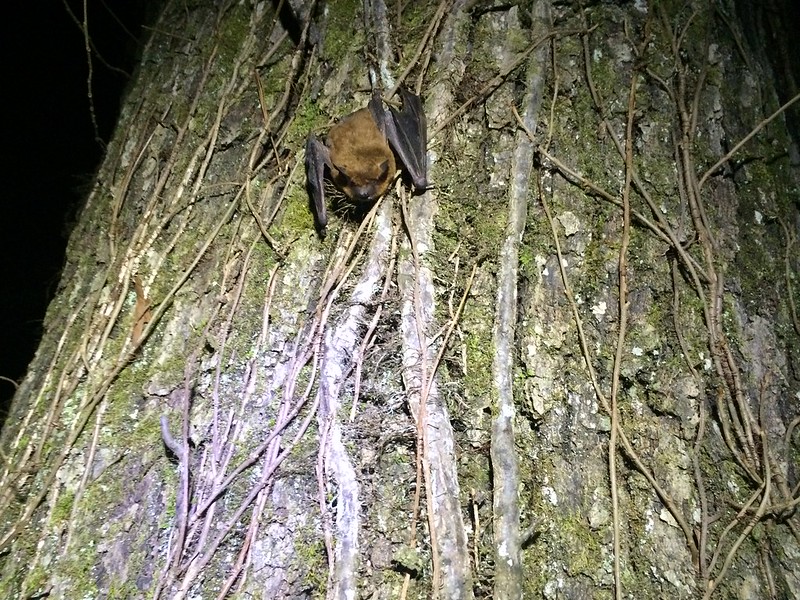
What clues can we glean about how climate change affects local ecosystems from the sounds of birds and bats?
This is just one question that UBC researchers Dr. Matthew Mitchell, a research associate in the Faculty of Land and Food Systems, and Laura Super, a PhD candidate from the Faculty of Forestry, seek to answer through their research at UBC Farm.
Listening for (Climate) Change
With special microphones installed around the farm and adjacent forest, Mitchell and Super aim to address this question by listening to bird and bat species in the ecosystem. Those recordings —which are captured 24/7— produce thousands of hours of data from the hundreds of thousands of unique bird and bat calls that they capture. By learning about and identifying which birds and bats inhabit the farm throughout the years and analyzing various factors such as the arrival of new species or changing migration patterns of existing inhabitants, Mitchell and Super are able to draw conclusions about how species are adapting to and affected by, climate change in the ecosystems supported by the farm.
To further analyze the recording data and identify the species in question, the researchers rely on the high-performance computing and data storage infrastructure offered by UBC Advanced Research Computing (ARC).
“We have software that clusters the sounds together and identifies the birds and bats from the calls, but it’s very computationally intensive to do that on a regular computer,” says Mitchell. He is affiliated with Assistant Professor Juli Carrillo’s research group. “ARC solves this for us."
In just a few hours, ARC’s Sockeye platform easily processes multiple terabytes of data generated through ongoing research. Mitchell estimates that it could take days or even weeks without such computing resources to extract usable data from the recordings. “And, I can store all of that data on ARC’s Chinook storage platform where it’s secure and backed up.”
Exploring Fundamental Questions with Advanced Research Computing
ARC supports the needs of UBC researchers who require their data to be hosted on-site or that cannot be accommodated by national or regional computing infrastructure platforms. They also consult with researchers to assist them in maximizing the benefits of the computing infrastructure. For Mitchell and Super, the one-on-one consultation ARC provided allowed them to pair their specialized audio analysis software with the supercomputing platform to further this project.
“High-performance computing is and will be the future of science because science produces so much data,” says Super, whose doctoral research (which is separate from her work with Mitchell) is supervised by Professor Robert Guy.
“We need the right tools to be able to use that data, and ARC helps provide that here at UBC.”
Having local access to advanced computing systems to store and analyze the data from the farm is essential for researchers like Mitchell and Super to develop insights over the long term. “This research may also help us to understand how climate change-related weather events like the 2021 heat dome or wildfire smoke impacted local ecosystems and landscapes,” says Mitchell.
Super appreciated the chance to access the technology for this project and for her doctoral thesis research, which explores phytobiomes and soil microbiomes. A phytobiome is a plant, its associated organisms and the surrounding environment. Studying plants holistically as phytobiomes or as their own biomes/ecosystems is an exciting new field, and because soil microbiomes and phytobiomes are complex systems, research about them can greatly benefit from applying big data approaches supported by high-performance computing. While Super has accessed national high-performance computing platforms in the past, the services provided by ARC were especially helpful throughout her research.
“The training from ARC was excellent, and I was able to discuss my project with the staff to figure out the best way to do what I needed on their platform. It was a great opportunity to learn about this technology and use it first hand to explore important research questions.”
Media Credits: Waveform image and sound clip courtesy Matthew Mitchell, UBC.
Researcher headshots: UBC.
Bat on tree: US Fish and Wildlife Service Flickr